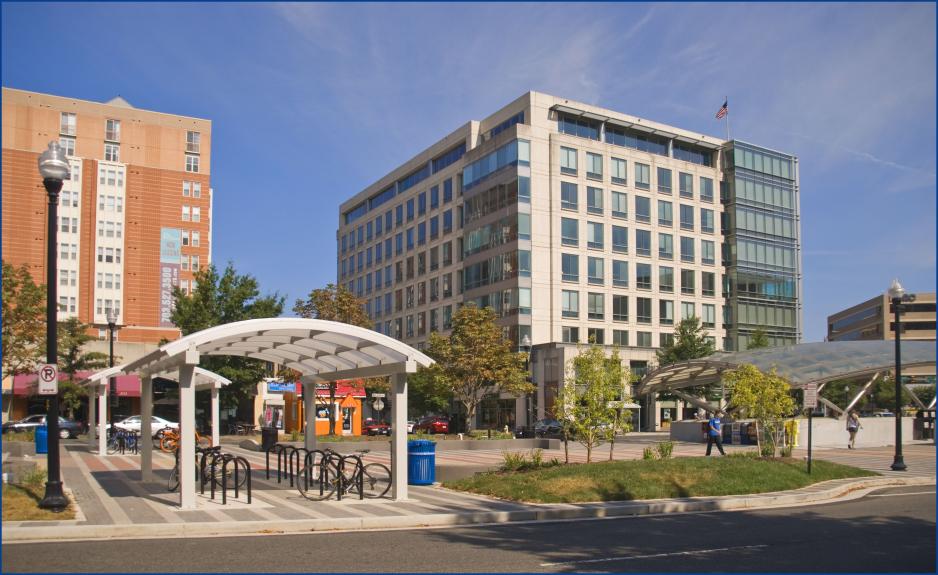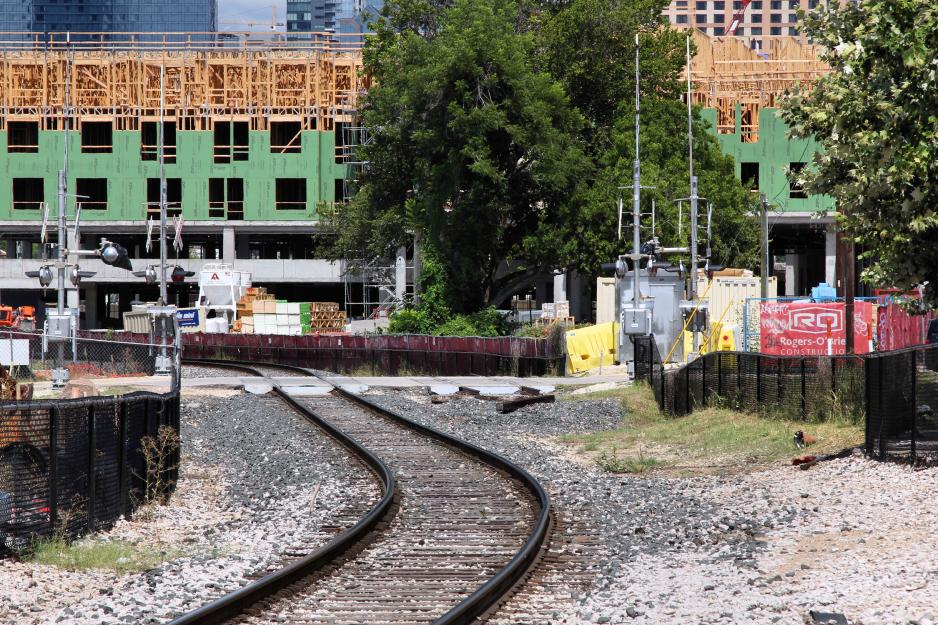Clarendon, Arlington, VA, USA - Clarendon Metro Station Urban Village - Predictable Entitlement Process and Development Potential-Based Property Assessment
Clarendon Urban Village, a TOD mixed-use development located 20 minutes from Washington D.C. via rail, overcame single-family residential zoning and required little public subsidy beyond construction of the transit system to leverage private investment. The County set the stage for the transition to TOD mixed-use through incentive zoning that allowed an increase in non-residential Floor Area Ratio from 1.5 to 3.8 and a reduction in parking from four to two spaces per 1,000 square feet. The County approved a series of projects, primarily based on the requirement for the developer to implement streetscape and other public realm improvements that benefit the surrounding and transit-user communities as well as project occupants.
The 2006 Clarendon Sector Plan calls for an urban village with a mix of uses including “active ground-floor uses, quality open spaces, and a balance of upper-story uses, and lower levels of density and height closer to surrounding neighborhoods.” Among the projects that have been constructed in the plan area, a handful of developments each provide hundreds of medium or high-density housing units plus significant amounts of both retail and office square footage on the same property.
A primary reason for project success cited by developers is predictability in the entitlement process. The General Plan land use designations for the transit station area were translated into the equivalent of an urban village plan that clearly enumerated the range of uses, densities, heights, and other development standards needed to guide project proposals. Another incentive was the County’s practice of assessing property based on development potential, as opposed to existing use, which discouraged land retention by non-developers. Although that practice is not transferable to California, the overall perspective of the jurisdiction anticipating TOD sends an encouraging message to the development community, especially via the creation of conforming zoning to implement General Plan objectives of supporting transit with a mixture of uses surrounding stations.
Austin, TX, USA - Plaza Saltillo, Community Benefits Through Joint Development
Plaza Saltillo, a joint development project at Austin’s eastern Downtown Commuter Rail Station, opened its first phase for occupancy in 2019. At buildout, the project is entitled for 800 housing units (including 18 percent that meet City affordability requirements), 110,000 square feet of retail anchored by a Whole Foods Market, an office building, and 1.4 acres of open space. The 10-acre former industrial site was purchased in 1990 by the Capital Metropolitan Transportation Authority (Capital Metro) with a $475,000 Federal Transit Administration (FTA) grant, while a $4.3 million FTA grant in 2012 allowed Capital Metro to relocate the rail line to enable development of the Plaza Saltillo site for mixed-use TOD.
After seeking developer interest, Capital Metro chose Endeavor Real Estate Group because its proposal provided the highest long-term value to Capital Metro ($160 million in total) and the most amenities to the local community among the proposals submitted. Endeavor is believed to be investing $40 million in private funding to build the project, with a 99-year ground lease from Capital Metro.
Serving as a hub for both rail and bus service, Plaza Saltillo features pedestrian paseos, underground and structured parking, electric vehicle stations, reserved car share spaces, pedestrian and bicycle amenities, and a new connection to the primary Class I bike path that serves downtown and the north side of the Colorado River. In addition to creating a new neighborhood center in a historically underserved area, the project is expected to generate at least 600 new transit riders per day on the commuter rail line.
San Francisco Bay Area Region, CA, USA - Metropolitan Transportation Commission Transportation Resources to Support Equitable TOD (eTOD)
In 2011, the Metropolitan Transportation Commission (MTC), the San Francisco Bay region’s metropolitan planning organization, created a regional eTOD fund called the Bay Area Transit Oriented Affordable Housing (TOAH) Fund. The fund included an initial investment of $10 million by MTC which was then able to leverage an additional $40 million in private and philanthropic capital. To raise these funds, MTC utilized an “exchange program” in which local jurisdictions provided capital to MTC in exchange for allocations of federal transportation funding for eligible transportation projects.
The TOAH Fund provides loan products that range from predevelopment to permanent gap financing for eTOD, including affordable housing, retail space and other critical services, such as childcare centers, fresh food outlets, and health clinics. Projects also are required to be located within a half-mile of high-quality transit and within Priority Development Areas. The TOAH Fund has successfully expanded affordable housing throughout the region as well as provided funding to preserve and increase community-serving retail in downtown Oakland.

